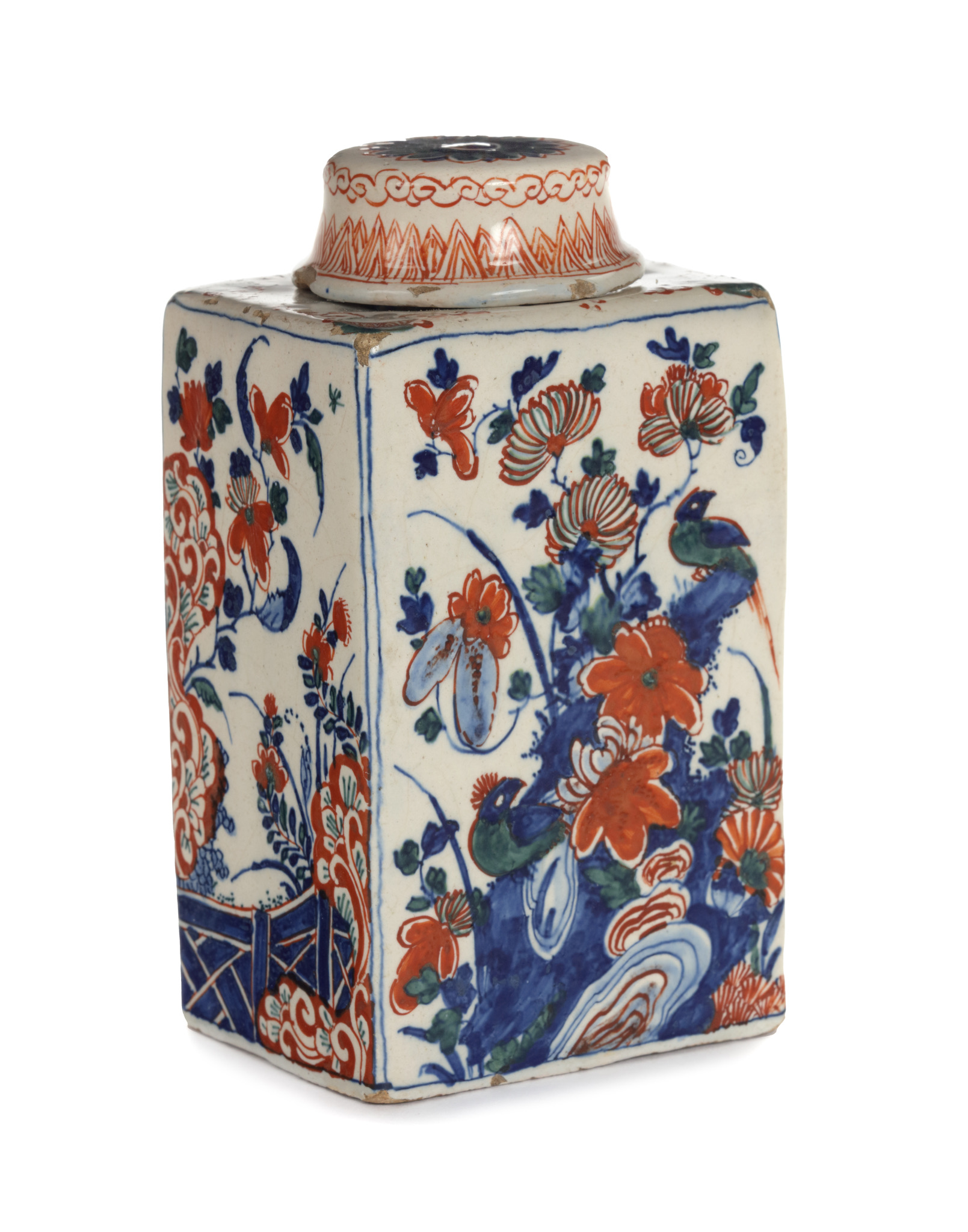
Polychrome Tea Canister and Cover
Every month, a special object from the Aronson Antiquairs’ collection is presented. This month, the focus is on a polychrome cashmere tea canister and cover, made around 1710.
The color palette on this tea canister is known as ‘cashmere’ due to its resemblance in color and intricate motifs to the fine woolen shawls imported from India, which were popular among high-class European ladies. As seen on the canister, the earthenware in this style features a rich color scheme of blue, red, and green, occasionally complemented by yellow or manganese. Despite being named after luxurious textiles, the inspiration for these Delft pieces came from Chinese famille verte porcelain wares of the Kangxi period (1662-1722), which began arriving in Europe at the end of the seventeenth century.
Delftware painters also drew inspiration from beyond China when designing cashmere pieces. One notable influence was the French baroque style that thrived during the reign of King Louis XIV. This style is characterized by the delicate use of arabesques, whimsical grotesques that have their roots in the Renaissance, and the combination of foliage with human and animal forms, elements that foreshadowed the Rococo movement. Additionally, motifs such as garlands of flowers, draperies, scrolls, and pendants were incorporated to create intricate and beautiful designs. The cashmere palette enjoyed a brief but widespread popularity during the early eighteenth century.
This tea canister has an intriguing provenance. In the early 1990s, several visits were made to an elegant and welcoming couple in their Amsterdam home. Among their various art objects was a remarkable Delftware collection. The gentleman was passionate about his collection and kept meticulous records of each acquisition, using a code to record the prices he paid—demonstrating both a pursuit of perfection and a desire for discretion.
The collector’s records began with a pair of Delft cows bought at an auction with Frederik Muller & Cie in Amsterdam in November 1954, with the assistance of art advisor Joh. H.C. Van Groeningen. The collector’s detailed notes often contained information not found in auction catalogues, reflecting his deep commitment to documenting provenance. Later, when the couple’s son was preparing to sell their large home, he sought to have the Delftware collection appraised and potentially sold. An agreement was reached, and the collection was acquired. In sharing its history, the family requested anonymity, maintaining their long-standing respect for privacy.
To ensure transparency and authenticity, collaboration with Provenance+, an Amsterdam-based company, plays a vital role. This company revolutionizes art transactions by securely managing provenance information through civil law notaries. A copy of the collector’s notebook has been entrusted to Provenance+, which verified and authenticated the history of the collection.
The collector’s father, even in the 1950s, recognized the importance of documenting the origins of art objects, making him a true pioneer of provenance well before it became common practice.
 Polychrome Tea Canister and Cover
Polychrome Tea Canister and Cover
Delft, circa 1710
The body painted in blue, green and iron-red on the front with two birds perched on the branches of a profusion of flowering plants behind stylized rockwork, repeated on the reverse but without the two birds, the sides with a garden fence, flowering plants and on one side a bird in flight, the flat shoulders with scroll and leaf devices in the corners, and the threaded circular neck enameled in blue; the cover with a threaded interior and the top with a flowerhead and its sides with a dental and interlinked ruyi-head border.
Height: 14 cm. (5.5 in.)
Price: € 6.500 (appr. export US$ 6,500)
